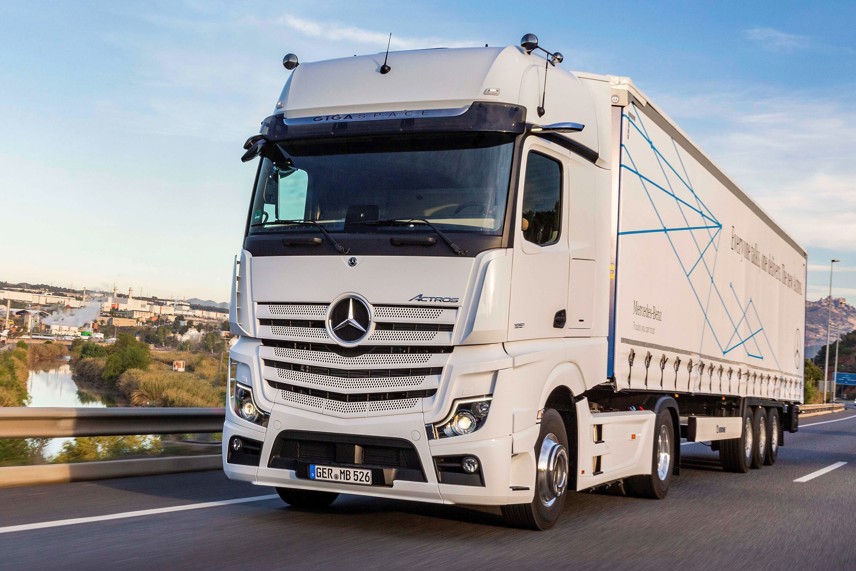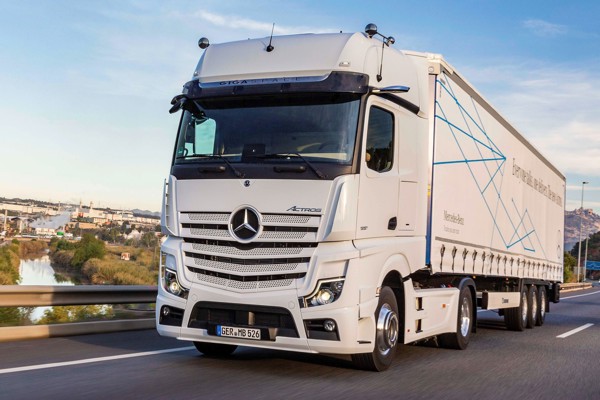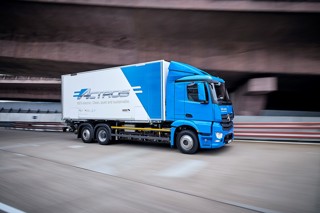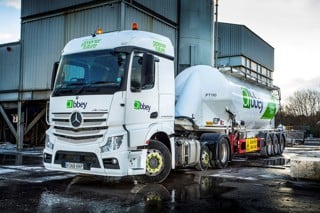Review
When it comes to the introduction of new technology within the heavy commercial vehicle sector, two names stand out – Mercedes-Benz and Volvo Trucks. Both global players have a well deserved reputation for ingenuity and the ability to look for innovation, not for its own sake, but for the purpose of attempting to reduce overall costs for the operator.
It's the nature of things that all manufacturers are a different stages in their product development cycle at different times unless there is a specific issue that demands change. The Euro emissions cycle is a classic example of this.
Mercedes-Benz appears to be at the top of the “new development” pile having announced the latest incarnation of their flagship Actros range, although others may follow in the not-too-distant future.
The most obvious difference between the new and current Actros is also probably one of the most significant, the MirrorCam system. Effectively the truck doesn’t have any rear view mirrors. Instead they are replaced by very futuristic-looking rear cameras on either side of the cab which are linked to a pair of LCD screens fitted portrait-style on the cabs inside A pillars. The approach is a first for a mass-produced truck and it will be standard on all models.
The screens also feature special distance lines to help with manoeuvring, cornering or changing lanes, as well as the ability to “move” to follow the trailers rear end for greater safety.
Another potentially useful feature is the new active drive assist, bringing partially automated driving to all speed ranges with the system manoeuvring itself according to the markings on the road by means of a camera, and under certain conditions takes over the longitudinal and lateral guidance of the truck. It allows automatic steering, braking and acceleration of the vehicle under certain circumstances, which is another first in the industry for a mass-produced truck and allows partially automated driving in all speed ranges. Of course Mercedes-Benz is keen to stress that we still haven’t entered the world of self driving trucks, and the system is still an assistance system and does not relieve drivers of their responsibilities.
In Europe, sideguard assist has been available since 2016 and is currently the only system of its kind fully integrated in the vehicle architecture potentially minimising the probability of dangerous accidents when cornering or when changing lanes and its now integrated into the MirrorCam displays.
Active brake assist has been through another generational upgrade, its fifth, and, using a combination of radar and camera system it reacts better to pedestrian detection with automatic maximum full-stop braking.
Ever since the industry first saw the forward predictive sat-nav systems such as Volvo’s I-See the potential of reducing total operating costs by using the system to improve fuel economy has been available. By expanding the “flexibility and intelligence” of the cruise control and transmission control system, Predictive Powertrain Control (PPC) has gained the ability to be used in both a motorway environment as well as an urban one and it’s especially effective on roundabouts , great news for anyone trunking around the Milton Keynes or Swindon area !!
A new truck dashboard upgrade would not be complete without the digital integration necessary for modern connectivity and Mercedes have taken the opportunity with new Actros to completely revamp the driver information system with two levels of multimedia offerings. The Multimedia Cockpit provides the driver with completely new control options using two large displays, a 10 inch primary display replaces the conventional instrument cluster with all the assistance systems. A second 10” provides information and controls for apps, Sat Nav air conditioning etc and these can be accessed via the touchscreen, buttons underneath the display or via the steering wheel. A further “interactive upgrade” is available replacing the 10” display with a larger 12” version which can be switched between a “conventional” or a more “digital information” based display.
Perhaps the only “fly in the ointment”, is that sideguard assist is not available in right hand drive and active drive assist is available on 4x2 configurations only.
On the road
Approaching the new Actros is slightly underwhelming, the outside of the truck doesn’t reflect the radical changes taking place on the inside. In fact, other than the obvious lack of door mirrors and the short stubby arms of the rear facing cameras on either side, casual observers would be hard pressed to differentiate between the current and new models unless they were side by side.
Once inside that all changes, the truck we were driving had the multimedia interactive upgrade with two 12” displays, the primary in the traditional central instrument panel position with the secondary panel directly to the right (this was a left hand drive event in Barcelona).
Its keyless entry and pushing the bottom button on the keyfob performs a system light check for the unit as well as the trailer. Pushing the start button brings the OMXXX to life and a quick blip of the throttle simultaneously releases the park brake and after turning the stalk on the steering when to “D”, we are off.
At first it’s a bit of a shock to be looking at a 15” display panel close up to you on the drivers' A pillar instead of looking outside the window for your door mirrors, and the contrast between a very close mirror on one side and the other one on the far side leaves your eyes trying to adjust. It took about 10 minutes of driving to adjust.
The displays are as good as an ordinary mirror, with the added safety benefit of never having the rear of the trailer out of vision even on a sharp bend and low light levels didn’t detract from the view.
All the latest safety systems such as Active Drive Assist, Active Brake Assist5, and Sideguard Assist help take the pressure off the driver although they still require a degree of close scrutiny, all these and the next generation Predictive Powertrain Control working within an urban environment produce a more relaxed driving style and its feels more controlled. The same can be said for the cab interior noise levels even when the twelve speed automated gearbox was racing up the gears there was little , if any, harsh sounding gear changing.
Summary
The mixture of up-to-date technology and heavy trucks can potentially be a cause for concern – especially in their introduction phase, but Mercedes have already had earlier versions of most of the systems so this should not be an issue. MirrorCam is the future, and we are sure other manufacturers will follow suit over the next two/three years, meaning Mercedes has become the leader of the pack, for now!



















